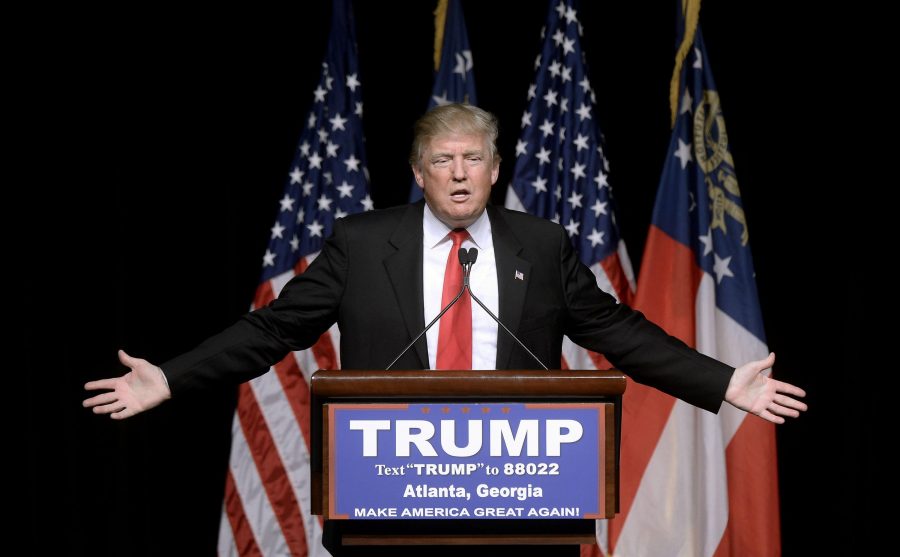Last summer, Donald Trump was a practical joke in a toupee.
The real estate mogul’s chances seemed slim enough that in June, he was accused of hiring actors — at $50 a head — to cheer for him at his campaign announcement.
Now it’s February 2016, and stumping the Trump has proved a tougher feat than originally thought. He is an impossible reality, a theatrical character — not a presidential candidate.
But guess what? This is real.
Tuesday, he won the Nevada caucus in a landslide victory, with 45.9 percent of the vote, and has been the primary leader in the polls. Trump has also garnered the support of GOP leadership, who say they will support Trump if he is the nominee, out of respect for the party and the system. Other big names in politics have also backed him, including Sarah Palin and former Utah Gov. Jon Huntsman Jr., who said two days ago he could “get behind Trump.”
Very real people are pushing for the very real possibility that Trump is going to be elected. But the entirety of his campaign is hinged on shock, racism, sexism and other bigotries, working to craft his seemingly irrational campaign.
As mad and illogical as a Trump presidency sounds, the polls portend a Trump nomination. We need to accept this reality and begin treating him like a potential president — so we can avoid that happening at all.
That starts with the media repainting him not as a shock-value comedian, but as a contender.
Opinions headlines from liberal print publications, such as The Washington Post, to conservative ones, such as National Review, have critiqued Trump to the point of exasperation.
But, according to Pew Research Center, 65 percent of Americans get their news from cable networks — and this is where Trump has thrived.
These outlets aren’t criticizing Trump like the writers at The Washington Post or National Review. They’re not even treating him like a presidential candidate. They’re portraying him as a spectacle and ratings-booster — and viewers can’t pry their eyes off of him.
On the eve of the Trump-less Iowa debate, he appeared on The O’Reilly Factor and made the show the most-watched on television that night, giving O’Reilly a 16 percent spike in viewers, according to Nielsen estimates. Why wouldn’t networks keep inviting him back?
Trump has metamorphosed into such an entertainer and one-man freak show that the Huffington Post decided in July to file all Trump related stories in its entertainment section. Upon criticism and realizing the counterproductive nature of its decision, the outlet reversed course on its categorization of Trump coverage.
However, the damage had already been done.
Last Tuesday, President Obama gave Trump a word of advice about what it’s like actually being commander in chief — and, according to the president, it’s not a “talk show or reality show”.
But everywhere Trump goes seems to turn into just that.
The media can’t continue to capitalize on Trump’s each and every publicity stunt. Not only does this pose a logistical issue due to the innumerable scandals he has wallowed in and the incapability to follow each one, but continuing to paint him as a theatrical stooge is clearly only doing one thing — further rolling out his red carpet.
Media outlets — across all mediums — must investigate and critique Trump. We’ve seen it with Hillary and her emails and the Benghazi scandal, and we’ve seen it with Ted Cruz and the false rumors his campaign allegedly spread about Ben Carson dropping out of the race.
Now, we need to see it with Trump. He is no longer the candidate sitting on a pedestal with a dunce hat. We need to be having serious conversations about his qualifications as an electable candidate before creating memes likening him to Darth Vader or “Game of Thrones” characters.
With the Texas debate today and Super Tuesday in five days, Trump is going to be making appearances in every publication and news channel. It’s up to these outlets to make sure it’s not just free airtime and advertising for the “Make America Great Again” touter.
If Trump really means business, he’ll need to be treated like he does.


